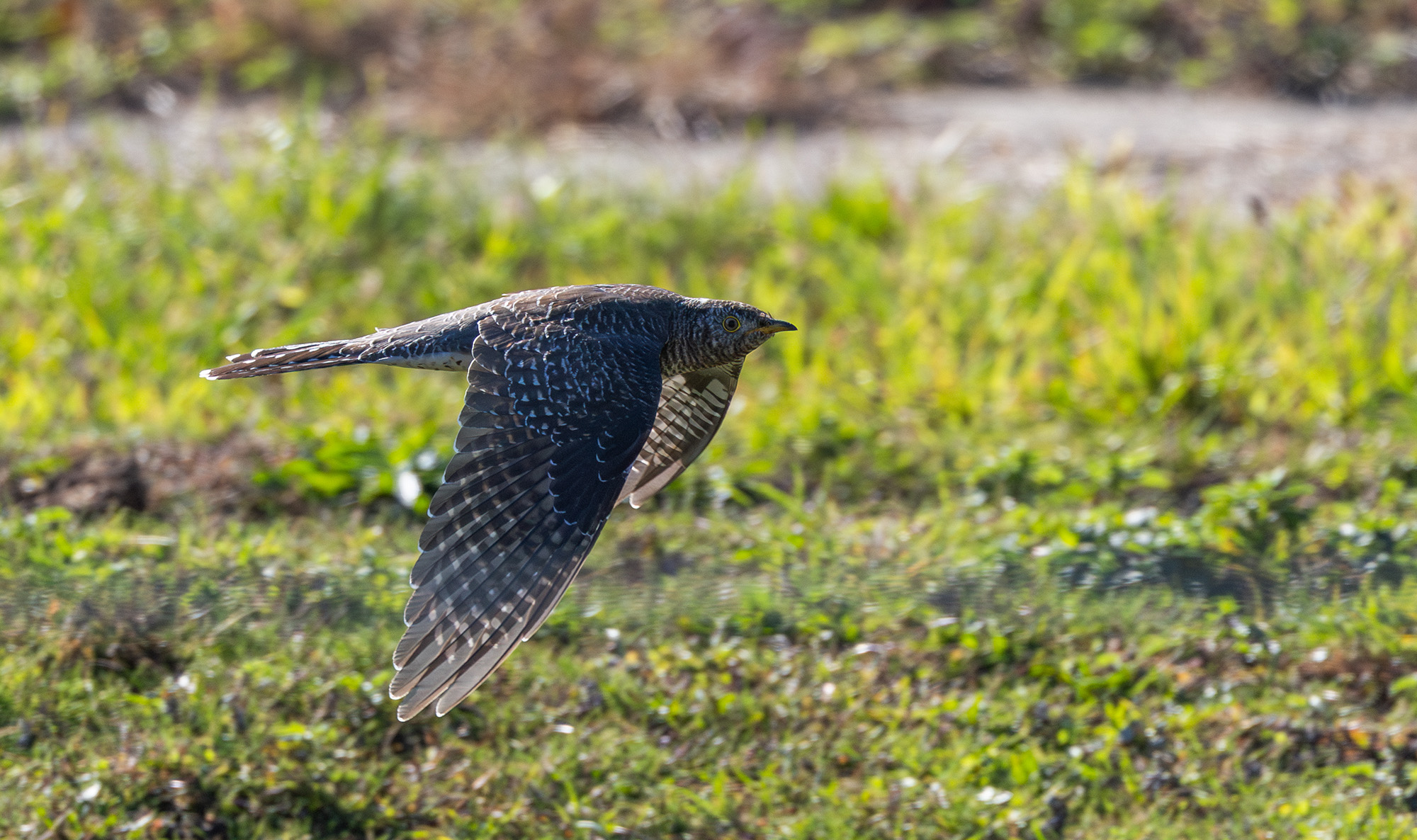**A Rare Cuckoo Bird Spotted at Long Island Golf Course Captivates Bird Lovers**
It’s a birdie that golfers and bird enthusiasts alike won’t soon forget. Bird lovers are flocking to a Long Island golf course to witness the biggest star to hit the links here since the Ryder Cup — a rare cuckoo bird spotted by a local golfer. This remarkable visitor may have traveled all the way from Russia, marking the first recorded appearance of this species in New York State.
Over 100 ornithological enthusiasts have made their way to Vineyards Golf and Country Club in Riverhead. Locals have even rolled out the red carpet, welcoming out-of-towners with open arms.
Roy William Gardner, the golfer who made the fateful discovery, told The Post, “The farmers are letting people come in to get a better view.” He first noticed the unfittingly named common cuckoo—only the fourth ever seen in the continental U.S.—“hopping post to post next to a cornfield” after pulling his cart up to the seventh hole about a week ago.
Gardner quickly sent a photo of the bird to his nephew, Christopher Sayers, an ornithologist who graduated from Cornell University. “He told me to drop a pin in my exact location right away,” Gardner recalled. “He said, ‘This is something that no one ever sees. This bird doesn’t come to the lower 48 states.’”
Sayers wasted no time spreading the word through online birdwatching groups. It didn’t take long—just “hours”—before fans started pouring in. Nearby farmers generously allowed spectators onto their land for a better glimpse of the roughly 13-inch-long visitor.
“I had no idea the storm it would cause in the bird world,” Gardner admitted. “Everybody got excited, calling me and saying, ‘This is an amazing find.’ I’m sure people are over there right now looking for it.” Gardner, a realtor based in East Quogue and lifelong bird lover, used to sketch birds as a boy.
Jay McGowan, an ornithologist friend of Sayers and Cornell researcher, drove from Ithaca early one morning after hearing about the cuckoo’s rarity—and its striking appearance. “The atmosphere was actually pretty grim when I arrived,” McGowan said. “The bird hadn’t been seen for an hour. The last report was that it had flown over the golf course and did not return.”
McGowan waited for hours alongside “a few dozen others.” Using satellite images, he speculated where the cuckoo might have gone and ultimately located it in an empty horse paddock.
“I got the word out through our rare bird alerts, and birders started pouring in,” McGowan shared. “Some had left in despair and rushed back, while others arrived quickly. Everyone got good views.”
Based on known migration patterns, McGowan believes the cuckoo is a juvenile in its first year. Its natural destination would have been Sub-Saharan Africa, but as Sayers noted, “a slight variation in the heading you take can put you someplace extremely wrong.”
This common cuckoo likely made the extraordinary transatlantic flight in one go, which is typical for the species. “It’s definitely equipped to make a distance like that,” added Sayers, a PhD candidate studying bird biology at UCLA. “It was probably pretty exhausted and was trying to refuel itself with some gypsy moths and other caterpillars in Riverhead.”
The bird hasn’t been seen for the past few days, suggesting it has moved on from the area, much to the dismay of local birdwatchers. However, McGowan said the little visitor “put on a show” during its brief stay between the North and South Forks.
“I think a lot of people were impressed by its foraging strategy and hopping from fence post to fence post,” said Sayers. “For the time it was visible, the cuckoo was quite active.”
This rare sighting has provided a memorable experience for many and a fascinating glimpse into the extraordinary journeys some birds undertake.
https://nypost.com/2025/10/30/us-news/how-a-bird-no-one-ever-sees-drove-tons-to-a-li-golf-course/


